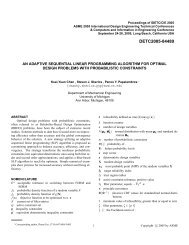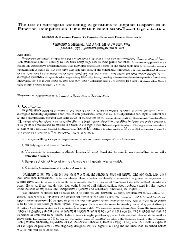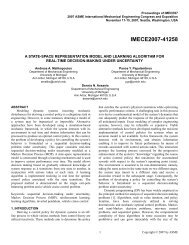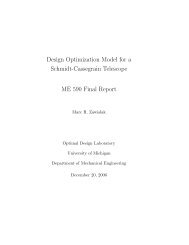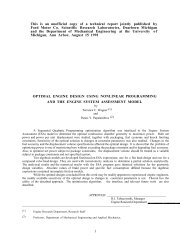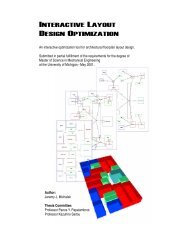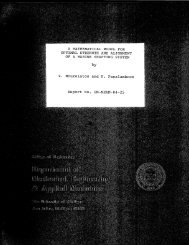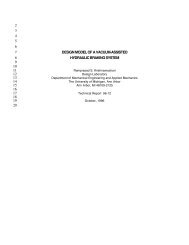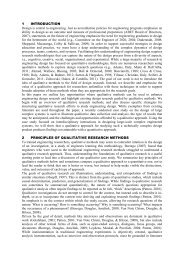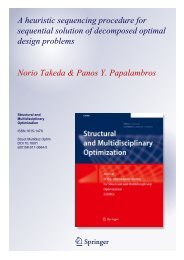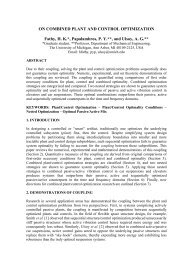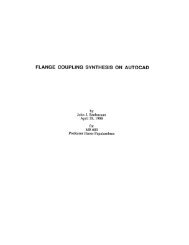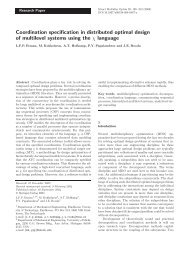Decomposition Analysis of an Automotive Powertrain Design ...
Decomposition Analysis of an Automotive Powertrain Design ...
Decomposition Analysis of an Automotive Powertrain Design ...
You also want an ePaper? Increase the reach of your titles
YUMPU automatically turns print PDFs into web optimized ePapers that Google loves.
<strong>Powertrain</strong> Relationships<br />
The principal behavior variables characterizing a powertrain are torque <strong>an</strong>d speed<br />
throughout the components. In <strong>an</strong>alyzing a vehicle's perform<strong>an</strong>ce, these behavior variables take<br />
on various values that constitute a vector <strong>of</strong> states as the vehicle <strong>an</strong>alysis is conducted: states<br />
through a driving cycle, states when the engine is at maximum torque, <strong>an</strong>d states effected by<br />
steady state criteria imposed on the vehicle. In the development <strong>of</strong> the powertrain relationships,<br />
the FDT partitions, <strong>an</strong>d the coordination strategy, torque <strong>an</strong>d speed are treated as only two<br />
behavior variables in contrast to representing every state separately. Other potential methods <strong>of</strong><br />
representing state variables are discussed in the concluding remarks.<br />
Figure 5 illustrates the power flow through the powertrain. The expressions relating<br />
engine torque, T e , to torque at the driving wheel, T d , are given by Equations (14) - (17).<br />
T i = T e - T acc - (π / 30) (I e + I acc + I i ) dN e /dt (14)<br />
T gb =T i R t - (π /30) I t dN t /dt (15)<br />
T fd = T gb η gb ξ gb - T ch - (π /30) (I gb + I ds ) dN ds /dt (16)<br />
T d = T fd η fd ξ fd - (π /30) I fd dN d /dt (17)<br />
These equations define the states (torque <strong>an</strong>d speed) <strong>of</strong> each element in the powertrain at <strong>an</strong>y point<br />
in time. Two additional state equations are required to define the relationship between engine<br />
actuation (throttle or m<strong>an</strong>ifold pressure) <strong>an</strong>d driving force at the road. The first is given as part <strong>of</strong><br />
the engine model development; the second is given with the wheel model. Development <strong>of</strong> the<br />
functional dependence <strong>of</strong> component efficiencies, <strong>an</strong>d reduction ratios on geometric <strong>an</strong>d control<br />
variables will complete the model development.<br />
Wheels<br />
The geometric wheel variable <strong>of</strong> interest is the effective tire radius, r e . The principal<br />
behavior variables <strong>of</strong> interest are the adhesion coefficient µ o , the traction coefficient µ, <strong>an</strong>d the slip<br />
ratio S. These qu<strong>an</strong>tify the interaction at the tire-road interface by the expression



